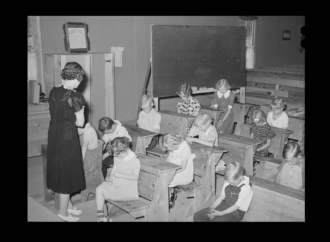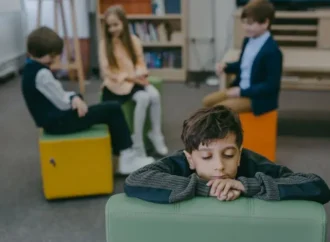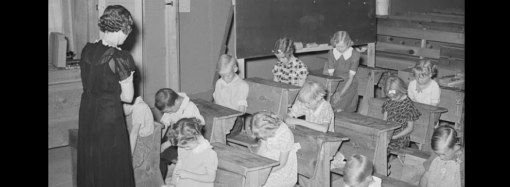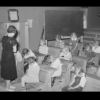Between 1900 and 1950, literacy among Americans 14 years and older rose dramatically. The 1950 Census found that illiteracy was below 3% in two-thirds of the states and below 10% in all states. These studies defined illiteracy as a complete inability to read English or any other language.
Seventy-five years later, that definition has changed a bit, but literacy in our country is growing worse.
The National Literacy Institute reports that 21% of today’s adults are illiterate, while 45 million are functionally illiterate, meaning they lack the reading skills necessary for functioning at work or in daily life. The United States ranks 36th globally in literacy, and poor reading skills cost our country over $2 trillion dollars a year.
These statistics mean that for the foreseeable future poorly prepared readers will not only continue to burden the economy but will themselves struggle to advance in the workplace, or be unable to enjoy the pleasure of reading novels, histories, and other good books.
The reasons pushed by government, teacher unions, and other organizations for this deplorable failure are fascinating. Some blame poverty, apparently forgetting that poverty was just as common in the United States in 1950 as now. Some point a finger at the number of foreign-born students in schools, yet data shows that native-born Americans “make up the largest percentage of those with low English literacy skills.” The National Literacy Institute points to a teacher shortage as part of the problem, though, again, in 1950 large classes were the rule rather than the exception in public and parochial schools.
But few of these officials blame the methods used to teach reading for these failures.
Until now.
For decades, Mississippi ranked near the bottom in reading and literacy as scored by the Nation’s Report Card. Many observers blamed the state’s poverty and “deeply rooted racial gaps” for these low scores.
In 2013, Mississippi ranked 49th on the Nation’s Report Card in reading. But then-Gov. Phil Bryant led the charge to reverse that dismal performance, and the Literacy-Based Promotion Act (LBPA) became law.
One key element in this legislation was the requirement that third-graders not reading at grade level by the end of the school year must repeat third grade. Though this mandate originally met resistance from some parents and teachers, Bryant and the bill’s defenders stuck to their convictions, and the rule remained in force. Today most see the wisdom in holding a child back who is unprepared for fourth grade.
Just as importantly, the LBPA insisted on a phonics-based program of teaching, also called the “science of reading.” In her article “Mississippi’s Reading Revolution,” Anne Wicks gives an excellent explanation of this technique:
The ‘science of reading,’ as this approach is called, is sometimes described as having a singular focus on phonics, but that is misleading. The science of reading actually includes five elements: phonics (the relationship between letters and sounds…), phonemic awareness (the ability to identify and manipulate individual sounds in words), fluency (the ability to read accurately and quickly), vocabulary (the meaning and context of words), and comprehension (a student’s ability to make meaning of what they read).
Finally, the LBPA actively sought and provided support for this new reading program, and the response was massive. Government and private donors invested in training coaches and teachers to spread the techniques necessary for the success of the science of reading. Joined as well by volunteers, all parties pitched in and made the program work.
Today Mississippi ranks 21st among the states in literacy.
This incredible leap forward has attracted the attention of other governors and state legislatures. Some 20 states are following Mississippi’s example, though unfortunately some lack the same zeal in training teachers and literacy coaches. There’s also ongoing debate about whether states should copy Mississippi and mandate the science of reading approach.
Mississippi has conclusively demonstrated that there’s nothing magical about teaching youngsters to read. Countless Americans – like Abraham Lincoln – grew literate at the knees of their mothers, and for decades homeschooling parents, private school educators, and even many public school teachers taught children to read using the five elements described by Wicks. Beginning in 1988, for instance, when our oldest child was not yet five, my wife and I taught our three sons to read using Samuel Blumenfeld’s “How to Tutor.” Since then, many more sophisticated approaches to phonics, both in print and online, have helped parents, few of whom have degrees in education, teach reading to their children.
So, bravo for Mississippi! May other states follow her example and put an end to illiteracy, functional or otherwise, in America.
—
The republication of this article is made possible by The Fred & Rheta Skelton Center for Cultural Renewal.
Image Credit: Direct Media
22 comments















22 Comments
Hertha Christiansen
October 13, 2025, 12:32 pmI Get paid 0ver $150 per hour w0rking from h0me. I never thought l'd be able to d0 it but my colleague makes over $ 15415 a m0nth doing this and she convinced me to try. The p0ssibility with this is limitless.
REPLYSEE MoRE HERE…..>>> https://Www.Smartpay1.site
Lexia Turnbull@Hertha Christiansen
October 13, 2025, 12:34 pmI get paid over 220 Dollars per hour working from home with 2 kids at home. i never thought i’d be able to do it but my best friend earns over 15k a month doing this and she convinced me to try. it was all true and has totally changed my life. This is what I do, check it out by Visiting Following Website…
REPLY.
.
HERE—————⊃⫸ https://Www.EarnApp1.Com
Lexia Turnbull@Lexia Turnbull
October 13, 2025, 12:35 pmI get paid over 220 Dollars per hour working from home with 2 kids at home. i never thought i’d be able to do it but my best friend earns over 15k a month doing this and she convinced me to try. it was all true and has totally changed my life. This is what I do, check it out by Visiting Following Website…
REPLY.
.
HERE—————⊃⫸ https://Www.EarnApp1.Com
Lexia Turnbull@Lexia Turnbull
October 13, 2025, 12:35 pmI get paid over 220 Dollars per hour working from home with 2 kids at home. i never thought i’d be able to do it but my best friend earns over 15k a month doing this and she convinced me to try. it was all true and has totally changed my life. This is what I do, check it out by Visiting Following Website…
REPLY.
.
HERE—————⊃⫸ https://Www.EarnApp1.Com
Work AT Home@Lexia Turnbull
October 13, 2025, 7:48 pmThe Secret to Work-Life Balance: I used to be stressed and overworked. Now, I'm earning over $220/hour working remotely, and I have more time for myself and my family. My friend's success story inspired me to take the plunge. This incredible opportunity has allowed me to achieve the perfect work-life balance. I can now spend quality time with my loved ones, pursue my hobbies, and relax without worrying about money..
Visit This…… https://www.Paycash1.site
REPLYAngel@Lexia Turnbull
October 14, 2025, 1:20 amget paid over 220 Dollars per hour working from home with 2 kids at home. i never thought i’d be able to do it but my best friend earns over 15k a month doing this and she convinced me to try. it was all true and has totally changed my life. This is what I do, check it out by Visiting Following Website…
REPLY.
.
HERE—————⊃⫸ https://Www.Cash43.Com
RSLewis@Lexia Turnbull
October 14, 2025, 1:21 amGoogle is now paying $300 to $500 per hour for doing work online work from home. Last paycheck of me said that $20537 from this easy and simple job. Its amazing and earns are awesome. No boss, full time freedom and earnings are in front of you. This job is just awesome. Every person can makes income online with google easily….
REPLY.
More Details For Us→→ http://Www.Payathome9.Com
ShamikaRDyer@Lexia Turnbull
October 14, 2025, 5:53 amI get paid more than $120 to $130 per hour for working online. I heard about this job 3 months ago and after joining this i have earned easily $15k from this without having online working skills. This is what I do……Www.Works6.Com
REPLYJuliya@Hertha Christiansen
October 13, 2025, 6:23 pmGoogle pays $220 an hour online. My close relative had been unemployed for nine months, but last month, she received a $25k paycheck by working from home for 10 hours a day. Everyone should try this job now—just use this link.
COPY THIS →→→→ http://Www.Work99.Site
REPLYHertha Christiansen
October 13, 2025, 12:35 pmI Get paid 0ver $150 per hour w0rking from h0me. I never thought l'd be able to d0 it but my colleague makes over $ 15415 a m0nth doing this and she convinced me to try. The p0ssibility with this is limitless.
REPLYSEE MoRE HERE…..>>> https://Www.Smartpay1.site
Hannah435
October 14, 2025, 6:23 amA step-ant is present, and what constitutes $220? This has been unenemployed five mths. Last mnth, she worked frome three hours a day and earned $1 .
for example.>>>>>>richjob2.com
REPLYCelia Wade
October 14, 2025, 6:54 amHome-based job that pays more than $2700-$4700+Dollar per week by doing simple tasks on a laptop or mobile device part-time. Last month, I earned $8400 Dollar from this job by working 4 hours per day online. Very simple jobs to do, and the earnings are insane. Everyone can now make more money online by joining the website listed below…..
Here is I started_______ https://Www.EarnApp1.Com
REPLYXimena Webster
October 14, 2025, 10:00 amI actually have gained $53k honestly in a month and a half of manner of method of pretty honestly working pastime from my laptop. Immediately even as out of place my remaining business, I come to be very troubled & in the long run I truly have placed this on-line (am-06) task wearing this out I can control to earn loads living at home. Each individual is able to do this pastime and get extra cash online going this article———->>> https://www.Homeprofit1.site
REPLY